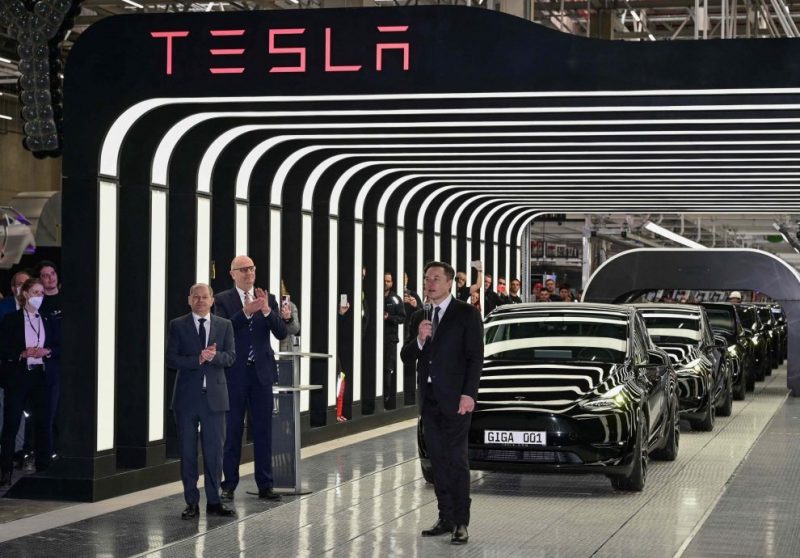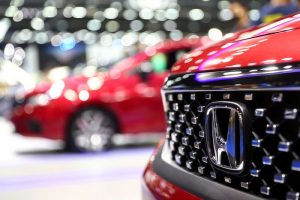Elon Musk is using Tesla’s superior profitability as a weapon in the electric vehicle (EV) price war he started, a move that could threaten the market share of Asian automakers with thinner margins.
The US auto giant, once one of the auto industry’s biggest money losers, earns more money for every vehicle it sells than any of its global rivals, according to a Reuters analysis.
Tesla earned $15,653 in gross profit per vehicle in the third quarter of 2022 – almost twice as much as China’s Nio, three times more than top EV seller BYD and four times the comparable figure at Toyota Motor Corp.
Also read: Buyers Say Tesla Forced Them to Close Orders Before Price Cuts
Growth in EV demand outpaced the overall market globally during 2022. That emboldened automakers to push EV prices higher.
For most of last year, Tesla joined rivals in aggressively raising prices on its most popular vehicles, such as the Model Y SUV. Shortages of chips and other materials kept auto industry production down, allowing companies across the industry to focus on higher-margin models and book strong profits, even as sales volumes fell.
Tesla’s decision to reverse course and spend its production-cost advantage on EV price cuts now challenges the profit-over-volume strategies established automakers pursued since the 2008 financial crisis, and doubled down on during the pandemic.
‘Bullying’ weak players
Tesla’s retail sales in China surged after it slashed prices for its top-selling EV models earlier in the month. Average daily sales for Tesla in China during the January 9 to January 15 period jumped 76% from the same period in 2022, according to data from China Merchants Bank International (CMBI).
“Tesla has taken the nuclear option to bully the weaker, thin margin players off the table” in China, said Bill Russo of Automobility, an industry consultancy in Shanghai. “Big pie, fewer slices, more to eat for those that remain.”
Startups such as China’s Xpeng Inc had benefited from Tesla’s price hikes. Now, Xpeng is cutting prices in China – but with less financial leeway than Tesla. Xpeng reported gross profit of $4,565 in the third quarter, and a net loss of $11,735 a vehicle, according to company data analysed by Reuters.
“We hope more people can access smart vehicles after we make our cars increasingly affordable,” Xpeng said in a statement.
Vietnamese EV startup Vinfast said on Thursday it will use price promotions to fight back against Tesla’s EV price war.
In China, the end of central government’s EV subsidies is also accelerating a market share war among rivals in the world’s largest EV market.
Chinese EV market leader BYD, with gross margins of $5,456 per vehicle, announced price increases effective from January 1 after Beijing phased out EV subsidies. So far, BYD has not responded to Tesla’s latest price cuts in China.
Tesla’s production-cost advantage
Analysts are warning the global EV market could soon have more production capacity than demand.
To control production costs, Tesla has invested heavily in new manufacturing technology – such as the use of large castings to replace small metal parts. Tesla brought battery manufacturing and other parts of its supply chain in-house, and standardised vehicle designs to improve economies of scale.
Using production-cost advantages to fund price cuts has a long history in the auto industry.
Henry Ford slashed prices on his Model T in the early 20th Century as his innovative mass-production system revved up.
During the 1980s and 1990s, Toyota used the cost lead provided by its lean production system to offer features at prices Detroit automakers struggled to match. Now, Toyota is rebooting its strategy under pressure from Tesla.
- Reuters, with additional editing by Vishakha Saxena
Also read:
Tesla Demand Gets a Boost in China Amid EV Price War With BYD
Volkswagen Says ‘Don’t Want to Give Up’ China EV Market
Tesla Bags 30,000 Orders After China Price Cuts – Tesmanian
Tesla Customers Protest in China Over Price Cuts – CarNews
























